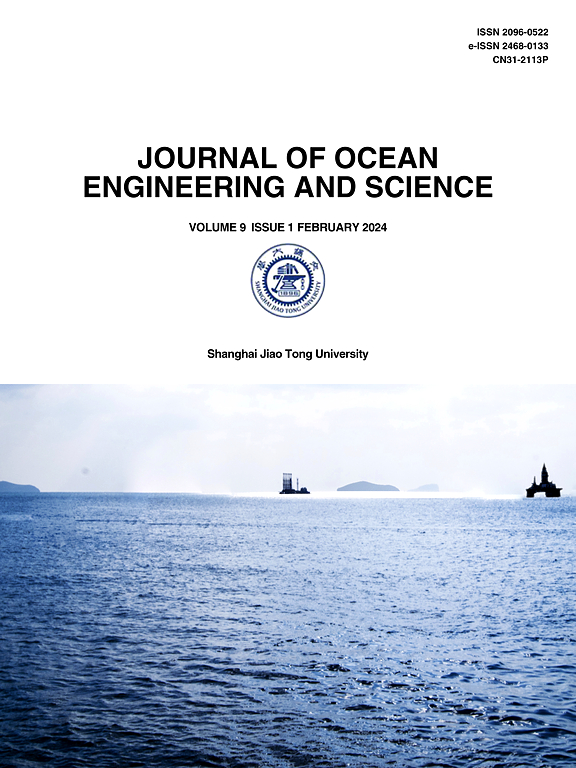利用物理约束进行可视化深度学习,预测单桩局部冲刷演变情况
IF 11.8
1区 工程技术
Q1 ENGINEERING, MARINE
引用次数: 0
摘要
局部冲刷威胁着海洋构筑物的安全,需要对构筑物周围的冲刷演变进行精确预测。本研究提出了一种面向视觉的深度学习模型,称为解纠缠物理约束预测(DPP),以可靠地预测单桩冲刷演化。它通过双分支架构集成了精练物理和先进的视频预测技术。物理约束循环模块(PRModule)分支利用循环神经网络(rnn)进行时间分化,确保准确预测与冲刷相关的物理信息。同时,卷积长短期记忆(ConvLSTM)分支捕捉视频的时空动态,重点关注残差特征的预测。DPP在预测单桩冲刷演化方面优于三个基线模型。与表现最好的基线模型相比,在三种搜索场景中,DPP的均方根误差降低了14.2%,平均绝对误差降低了14.7%,结构相似性平均提高了8.1%。预测的冲刷框架与真实框架一致,证明了DPP作为保护海洋基础设施的宝贵工具的潜力。本文章由计算机程序翻译,如有差异,请以英文原文为准。
Visual deep learning with physics constraints for local scour evolution prediction at monopiles
Local scour threatens the safety of marine structures, necessitating the precise prediction of scour evolution around these structures. A visually oriented deep learning model, called Disentangled Physics-constrained Prediction (DPP), was proposed in this study to predict scour evolution at monopiles reliably. It integrates scouring physics with advanced video prediction techniques through a two-branch architecture. The Physics-constrained Recurrent Module (PRModule) branch leverages Recurrent Neural Networks (RNNs) for temporal differentiation, ensuring accurate prediction of scouring-related physical information. Meanwhile, the Convolutional Long-Short-Term Memory (ConvLSTM) branch captures spatial and temporal dynamics in scouring videos, focusing on the prediction of residual features. DPP outperformed three baseline models in predicting the scour evolution at monopiles. Across three scouring scenarios, DPP achieved a 14.2% decrease in Root Mean Squared Error, a 14.7% reduction in Mean Absolute Error, and an 8.1% increase in Structural Similarity on average, compared to the best-performing baseline model. The predicted scouring frames are found to agree well with the true frames, demonstrating DPP's potential as a valuable tool to protect marine infrastructures.
求助全文
通过发布文献求助,成功后即可免费获取论文全文。
去求助
来源期刊

Journal of Ocean Engineering and Science
Multiple-
CiteScore
11.50
自引率
19.70%
发文量
224
审稿时长
29 days
期刊介绍:
The Journal of Ocean Engineering and Science (JOES) serves as a platform for disseminating original research and advancements in the realm of ocean engineering and science.
JOES encourages the submission of papers covering various aspects of ocean engineering and science.
 求助内容:
求助内容: 应助结果提醒方式:
应助结果提醒方式:


